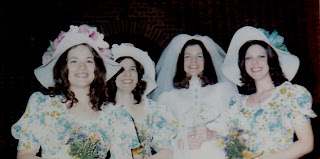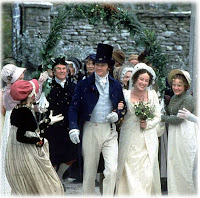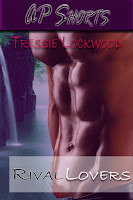Today, we welcome Tessa Dare, whose Samhain e-novella, The Legend of the Were-Stag, is out now. Tessa will release a full length book in July, The Goddess Of The Hunt, followed by Surrender Of A Siren in August and A Lady Of Persuasion in September.
And a bit about Tessa:
Tessa Dare is a part-time librarian, full-time mommy and swing-shift writer living in Southern California.
Tessa lived a rather nomadic childhood in the Midwest. As a girl, she discovered that no matter how many times she moved, two kinds of friends traveled with her: the friends in books, and the friends in her head. She still converses with both sets daily.
Tessa writes fresh and flirty historical romance, a blog, and the stray magazine article. To the chagrin of her family, Tessa does not write grocery lists, Christmas cards, or timely checks to utility companies. She shares a tiny bungalow with her husband, their two children, a dog, and many dust bunnies.
Tessa enjoys a good book, a good laugh, a good long walk in the woods, a good movie, a good meal, a glass of good wine, and the company of good people.

Please welcome Tessa to the Risky Regencies!
***
The Care and Feeding of Werestags: Writing the ruminant shifter historical hero
Last week, my first e-novella, The Legend of the Werestag, was released into the wild! As I believe it may be the first Regency-set historical romance novella to feature a were-ruminant, I thought I might offer a few words of advice to any historical authors looking to explore this new, exciting sub-subgenre.
Habitat:
Forget Bath and Brighton. For the fashionable Regency gent with ruminant-shifter propensities, the ideal holiday locale is a well-appointed manor house (turret optional), conveniently situated near a dark, misty, cursed forest. As you see from my cover, Swinford Manor fits the bill perfectly.
Attire:
Take a look at the cover for TLOTW, and note carefully the attire of the hero. Not his bare chest, mind, but his attire. You may think that this depicts an anachronistic button-down shirt, since it is open to the waist. In actuality, an open-front shirt is a wardrobe necessity for a were-ruminant hero in any historic era. Why, you may ask? One word: Antlers.
Feeding habits:
As everyone knows, werestags are herbivores and must be provided ample fodder for rumination. The gracious host will provide a cold buffet of vegetables, leafy salads, and whole grains, but in a pinch, bread will do:
Ignoring Brooke’s grumbling objection, Luke swiped a roll from his neighbor’s plate and chewed it moodily.
(Note that in human form, the werestag hero is inclined to not only obsessive mastication, but obsessive brooding. “Chewing moodily,” or ruminating in multiple senses of the term simultaneously, is the mark of a male were-ruminant in his prime.)
Respect the man and his inner beast:
Feeling a little bit silly–and why should she, she talked to horses and dogs all the time–she addressed him. “Can you understand me? My speech, I mean?” When he gave no response, she added, “If you can understand me, nod your head twice. Or tap your hoof, perhaps.”
His neck lengthened a fraction, so that his regal crown of antlers struck an even more impressive silhouette. I am not one of your horses or dogs, his proud bearing told her. I do not nod or tap on command.
The wise heroine (and her authoress) remembers that her werestag hero is a wild creature by nature. The goal is never to subdue his inner beast, but to embrace it.
I’m sure it’s obvious by now, but of course I’m joking. 🙂 My novella is not truly a paranormal shifter story, but rather a straight historical romance. All werestags in The Legend of the Werestag remain just that: the stuff of legends. TLOTW (available as an e-book from Samhain Publishing) was my chance to take my favorite paranormal conventions and play with them within the confines of historical romance. A gothic setting, hair-raising action in a darkened forest, and raw, animal passion, to start. A tortured hero just returned from war, who’s not quite sure he’s fully human anymore, and the heroine determined to prove she’s strong enough to embrace his inner beast. Werestag is also loosely linked to my forthcoming print debut, Goddess of the Hunt (Ballantine, July 28th). You can find excerpts of both books at my website, TessaDare.com.
Thank you so much for inviting me today! It’s an honor.
What sort of shifter hero are you desperate to see in Regency-set romance? A were-hound ranging the moors of Devon? A were-badger paddling the Severn? A were-hedgehog, perhaps? 😉
A lucky commenter will win a free download of The Legend of the Werestag and a signed coverflat of Goddess of the Hunt!
















